 We docked in Saint Petersburg well before sunrise. Actually, it never really gets dark up here this time of year, but by 6:45am, we were off to the rail station and boarded a very sleek, modern high-speed train known as Sapsan. At 185 mph, we were in Moscow by 10am. Like a kid in a candy store, I was up at 2am so I was a little groggy, but I didn’t want to miss a moment. It was much the same when we visited Sydney for the first time – you just don’t want to miss a moment. And yes, I rolled Cheryl out of bed about 3am – she too was equally as excited. To digress momentarily, the actual sail-in was somewhat unique. It reminded us of Shanghai – a wagon train of ships ahead of us and behind. St. Pete has a massive harbor, probably the largest I’ve ever seen, though the channel or marked path in which large ships must travel is very narrow & shallow. Not a very scenic sail-in by any stretch, but distinctive in some areas. I was up in the Crow’s nest to get a birdseye view of both sides, and was the only person up there. Of course, it was only 4:30am, but c’mon, this is St. Petersburg!
We docked in Saint Petersburg well before sunrise. Actually, it never really gets dark up here this time of year, but by 6:45am, we were off to the rail station and boarded a very sleek, modern high-speed train known as Sapsan. At 185 mph, we were in Moscow by 10am. Like a kid in a candy store, I was up at 2am so I was a little groggy, but I didn’t want to miss a moment. It was much the same when we visited Sydney for the first time – you just don’t want to miss a moment. And yes, I rolled Cheryl out of bed about 3am – she too was equally as excited. To digress momentarily, the actual sail-in was somewhat unique. It reminded us of Shanghai – a wagon train of ships ahead of us and behind. St. Pete has a massive harbor, probably the largest I’ve ever seen, though the channel or marked path in which large ships must travel is very narrow & shallow. Not a very scenic sail-in by any stretch, but distinctive in some areas. I was up in the Crow’s nest to get a birdseye view of both sides, and was the only person up there. Of course, it was only 4:30am, but c’mon, this is St. Petersburg!
The Sapsan high-speed train runs between St. Pete & Moscow, and has been in service since 2009. The distance is 405 miles – we were there in just over 3 hours. The trip to Moscow itself was both very scenic yet often times oppressive. Large pine trees and lush forests gave way to very poor living conditions with shanti’s & lean-to’s. The small towns consisted of mostly decayed, cookie-cutter shacks with dirt roads. We were surprised. A close comparison would be that which you find in Tijuana, Mexico. The train was clean & comfortable. The service…well…we had two very opposite experiences coming and going. Going to Moscow, it was two hours before a drink cart came by, and another 30 minutes before breakfast was served. The ‘food’ was so disgusting we ate potato chips from our carry-on. The attendants were stone-faced & quite insolent. Returning to St. Pete, service was impeccable – the attendants were smiling, they were prompt, courteous, helpful, and the food was pretty good. Language was a barrier in both directions, but the universal “please & thank you” is always recognized and appreciated…most of the time. I think the gals on the way to Moscow ALL woke on the wrong side!
Moscow was a mix of sun & rain – mostly rain. The weather changed quickly, but we were prepared for both conditions.
First, a little about the city. What a mix. It seems you have the very wealthy and very poor – nothing in between. It’s the capital and most populous city of Russia, about 13 million folks within the city limits and 18 million within the urban area and as you might guess, is the major political, economic, cultural, and scientific center of Russia and Eastern Europe, as well as the largest city entirely on the European continent. By broader definitions Moscow is among the world's largest cities, being the 14th largest metro area, the 18th largest agglomeration, the 15th largest urban area, and the 11th largest by population within city limits worldwide. According to Forbes, Moscow has been ranked as the ninth most expensive city in the world by Mercer and has one of the world's largest urban economies, being ranked as an alpha global city according to the Globalization and World Cities Research Network - and is also one of the fastest growing tourist destinations in the world according to the MasterCard Global Destination Cities Index. In the downtown area…road construction everywhere. Our guide told us they’re preparing for the World Cup next year. Although the event is to be held in St. Pete, they expect tourism to increase significantly, though I don’t see how the city could handle more!
Moscow is also the northernmost and coldest megacity and metropolis on Earth. It is home to the Ostankino Tower, the tallest free standing structure in Europe; the Federation Tower, the tallest skyscraper in Europe; and the Moscow International Business Center. The city itself is situated on the Moskva River in the Central Federal District of European Russia, making it the world's most populated inland city. Believe me…you really feel it. The city is well known for its architecture, particularly its historic buildings such as Saint Basil's Cathedral with its brightly colored domes. With over 40 percent of its territory covered by greenery, it is one of the greenest capitals and major cities in Europe and the world, having the largest forest in an urban area within its borders—more than any other major city—even before its expansion in 2012. The city has served as the capital of a progression of states, from the medieval Grand Duchy of Moscow and the subsequent Tsardom of Russia to the Russian Empire to the Soviet Union and the contemporary Russian Federation. Moscow is considered the center of Russian culture, having served as the home of Russian artists, scientists and sports figures and because of the presence of museums, academic and political institutions and theatres. The place is insane – it reminded us of New York City. We actually enjoyed St. Pete more – but that’s another blog & posting.
Moscow is the seat of power of the Government of Russia, being the site of (none other than) the Moscow Kremlin, a medieval city-fortress that is today the residence for work of the President Putin. The Moscow Kremlin and Red Square are also one of several World Heritage Sites in the city. Both chambers of the Russian parliament (the State Duma and the Federation Council) also sit in the city. Red Square & the Kremlin are like entering Disney World. Impeccably clean, very green, beautiful gardens, stunning architecture, and yes…huge crowds!!
Before I forget and as mentioned briefly, we arrived from St. Pete by train, and Moscow has one of the deepest underground rapid transit systems in the world - the fourth-largest in the world and largest outside of Asia in terms of passenger numbers, and the busiest in Europe. I believe we arrived (and departed) at the rail station nearest the Kremlin and quite surprisingly, it was a hell-hole. Extremely dirty both inside and out. Slimy, greasy floors, and it smelled a lot like a locker room – not a good first impression – though we were told there are other stations around the city that are much nicer. But just so you know.
The original Moscow Kremlin was built during the 14th century. The walls were completed in 1495. The Kremlin's Great Bell Tower was built between 1505–08 and augmented to its present height in 1600. It is (and was) truly amazing! Without question, a definite site for your bucket list. Be prepared for huge crowds and long lines, but well worth it. There was a lot of walking involved – a mix of flat and cobblestone surfaces. And the mall in Red Square…named GUM (pronounced GOOM) is one of the most beautiful we’ve ever visited. It’s all indoors – lush with flowers, and some very expensive shops. Beware – I was on my usual hunt for a bathroom and like most cities in this part of the world, they’re difficult to find and there’s almost always a fee involved. I was getting desperate, but ran across a bathroom (known as a water closet, or advertised as a WC) and had to pay $15. Unbelievable! There was another guy from the ship who had no money and he looked more desperate than me – he was turning colors – so Cheryl said we’ll just “pay it forward” much to his relief (literally). We don’t pay that much for lunch, let alone the opposite!
During the postwar years, there was a serious housing crisis, solved by the invention of high-rise apartments. Surprisingly, there are over 11,000 of these standardized and prefabricated apartment blocks, housing the majority of Moscow's population, making it by far the city with the most high-rise buildings. It reminded us of Hong Kong – much the very same scenario. We learned that apartments were built and partly furnished in the factory before being raised and stacked into tall columns. The popular Soviet-era comic film Irony of Fate parodies this construction method. Pretty amazing.
In 1959 Nikita Khrushchev launched his anti-religious campaign. By 1964 over 10 thousand churches out of 20 thousand were shut down (mostly in rural areas) and many were demolished. Of 58 monasteries and convents operating in 1959, only sixteen remained by 1964; of Moscow's fifty churches operating in 1959, thirty were closed and six demolished.
Moscow's architecture is world-renowned. It’s the site of Saint Basil’s Cathedral, with its elegant onion domes, as well as the Cathedral of Christ the Savior and the Seven Sisters. Check out the photos below. I may have time at some point to back and label them. Medieval Moscow's design was of concentric walls and intersecting radial thoroughfares. This layout, as well as Moscow's rivers, helped shape Moscow's design in subsequent centuries. The Kremlin was rebuilt in the 15th century. Its towers and some of its churches were built by Italian architects, lending the city some of the aura of the renaissance. From the end of the 15th century, the city was embellished by masonry structures such as monasteries, palaces, walls, towers, and churches. Moscow rivals the city of Rome, but in a much different manner. I’m not saying one is better than the other…just different in style and both are must-sees.
Perhaps the most recognizable contributions of the Stalinist period are the so-called Seven Sisters, comprising seven massive skyscrapers scattered throughout the city at about an equal distance from the Kremlin. A defining feature of Moscow’s skyline, their imposing form was allegedly inspired by the Manhattan Municipal Building in New York City, and their style—with intricate exteriors and a large central spire—has been described as Stalinist Gothic architecture. All seven towers can be seen from most high points in the city; they are among the tallest constructions in central Moscow apart from the Ostankino Tower, which, when it was completed in 1967, was the highest free-standing land structure in the world and today remains the world’s 72nd tallest, ranking among buildings such as the Burj Khalifa in Dubai, Taipei 101 in Taiwan and the CN Tower in Toronto.
The Soviet goal of providing housing for every family, and the rapid growth of Moscow's population, led to the construction of large, monotonous housing blocks as mentioned earlier. Most of these date from the post-Stalin era and the styles are often named after the leader then in power (Brezhnev, Khrushchev, etc.). They are usually poorly maintained based on feedback from our guide, and as you drive by, their sub-standard conditions are easily seen.
Stalinist-era buildings, mostly found in the central part of the city, are massive and usually ornamented with Socialist realism motifs that imitate classical themes. However, small churches – almost always Eastern Orthodox– found across the city, provide glimpses of its past.
The city is full of clubs, restaurants and bars. Tverskaya Street is also one of the busiest shopping streets in Moscow. The adjoining Tretyakovsky Proyezd, also south of Tverskaya Street, in Kitai-gorod, is host to upmarket boutique stores such as Bulgari, Tiffany & Co., Armani, Prada and Bentley. Nightlife in Moscow has moved on since Soviet times and today the city has many of the world's largest nightclubs. Clubs, bars, creative spaces and restaurants-turned-into-dancefloors are flooding Moscow streets with new openings every year. The hottest area is located around the old chocolate factory, where bars, nightclubs, galleries, cafes and restaurants are placed.
Primary industries in Moscow include the chemical, metallurgy, food, textile, furniture, energy production, software development and machinery industries. I asked about property values & related costs, and was told that the price of real estate continues to rise. He said that today, you could expect to pay $4000 on average for 11 square feet on the outskirts of the city or US$6,500–$8,000 per the same area in a prestigious district. The price sometimes may exceed US$40,000 per 11 square feet in a flat. It costs about US$1200 per month to rent a 1-bedroom apartment and about US$1000 per month for a studio in the center of Moscow. A typical one-bedroom apartment is about 320 square feet, a typical two-bedroom apartment is 480 square feet, and a typical three-bedroom apartment is 750 square feet. Many cannot move out of their apartments, especially if a family lives in a two-room apartment originally granted by the state during the Soviet era. Some city residents have attempted to cope with the cost of living by renting their apartments while staying in dachas (country houses) outside the city.
In 2006, Mercer Human Resources Consulting named Moscow the world's most expensive city for expatriate employees, ahead of perennial winner Tokyo, due to the stable Russian ruble as well as increasing housing prices within the city. However, Tokyo has overtaken Moscow as the most expensive city in the world, placing Moscow at third and behind Osaka at second.
If you plan to visit, I’d strongly recommend either a group tour or private tour. The latter will cost you more, but if we were to return, that’s what we’d do. We had a group of 27 (including us) and it worked OK, but in hindsight, I’d spend the additional money. I’d never attempt to do Moscow on our own – it’s as busy as NYC or Hong Kong, but much more perplexing to navigate.
One final thought. We were told by several passengers who visited many years ago to be prepared for very rude, inconsiderate residents. We were told they very much dislike Americans. I looked for it. We both looked for it. Our first contact with Russians was during the immigration/passport processing – we were told that process might actually be the worst. And the results?
Those of you who know me/us…the following won’t surprise you. I’ve always said and still believe to this day, that we’re all human - that if you greet people with a smile, that if you treat people with the same level of genuine, common courtesy and respect we all desire, you’ll get it back in return. The folks at Passport Control? Smiles. The security guards, bus drivers, shop owners, gardeners, maintenance folks and store sales people? Smiles & kind words.
The attendants on our first train trip – not so much…but there’s always a few no matter where you go.
The sour folks on our ship who had sour experiences a few years ago?? They had another sour day in Moscow.
Go figure.
Ours was great!






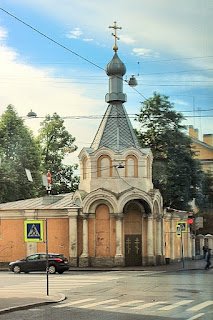










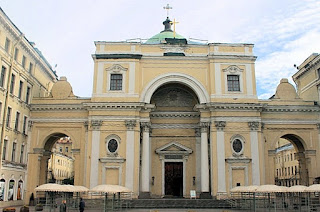























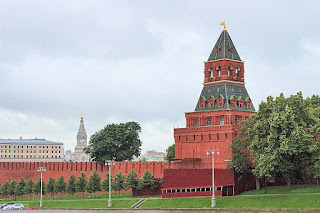

















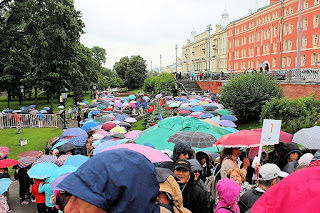


























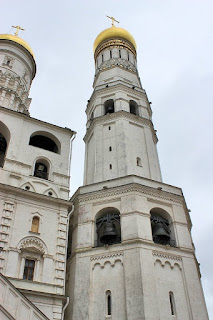


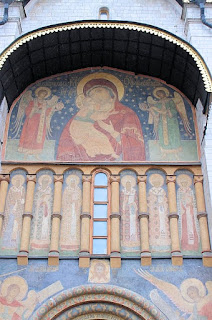


















































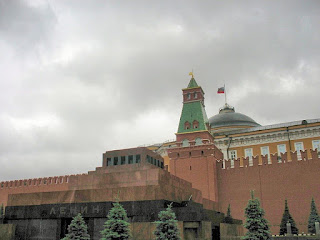

































No comments:
Post a Comment